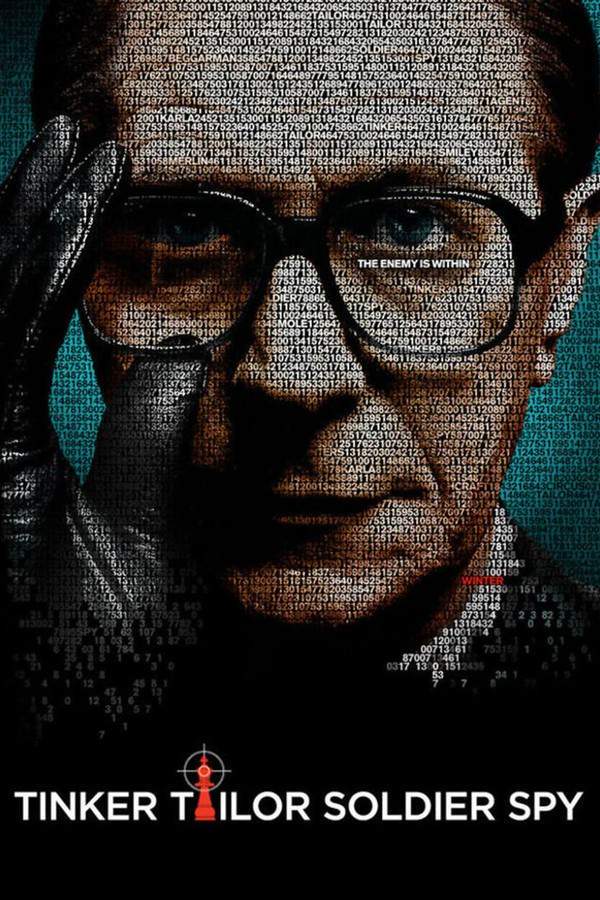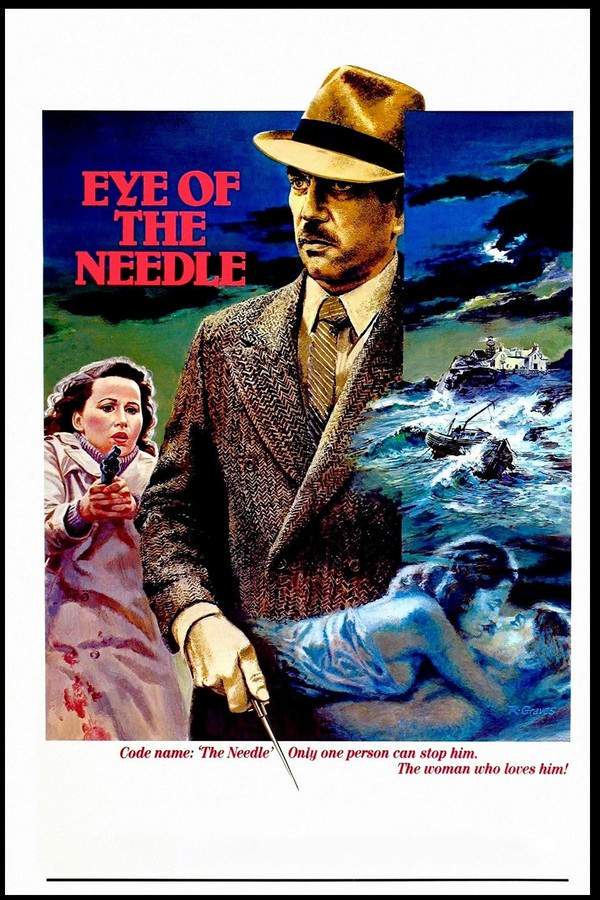
The Looking Glass War
Year: 1970
Runtime: 108 mins
Language: English
Director: Frank Pierson
“Why do we listen to them? Why do we fight their wars for them?” When a Polish sailor deserts his ship in Britain, local intelligence officers place him under surveillance. They soon enlist him to infiltrate a missile installation outside East Berlin, hoping he can smuggle photographs of the newly‑installed rockets and reveal the covert arms buildup behind the Iron Curtain.
Warning: spoilers below!
Haven’t seen The Looking Glass War yet? This summary contains major spoilers. Bookmark the page, watch the movie, and come back for the full breakdown. If you're ready, scroll on and relive the story!
The Looking Glass War (1970) – Full Plot Summary & Ending Explained
Read the complete plot breakdown of The Looking Glass War (1970), including all key story events, major twists, and the ending explained in detail. Discover what really happened—and what it all means.
John Avery, Anthony Hopkins, and his supervisor LeClerc, Ralph Richardson, find themselves entangled in a high-stakes Cold War ruse after an MI6 agent is killed and a roll of flyover photographs goes missing. The initial discovery suggests the Stasi are concealing a new rocket system based on the V-2, a potential violation of international accords. When a second source delivers photographs that supposedly confirm the rocket’s existence, the MI6 team pays for the set, only to learn that the images are said to be held in Kalkstadt by the source’s father. With this hint, the agency crafts a daring plan: to verify the rocket by sending one operative across the East German border, a mission that hinges on trust, timing, and a delicate political balance.
Leiser, a Polish defector and Christopher Jones who has illegally entered England to be with the woman who bears his child, is vetted for the mission and granted a potential path to UK citizenship in exchange for his service. He undergoes intense preparation at a safehouse, learning self-defense, survival skills, and how to use a compact radio transmitter to send coded updates. His resolve wavers when a private reunion with his girlfriend reveals a painful truth—their child was aborted—yet a night of shared camaraderie with Avery rekindles his determination to proceed.
Crossing the border under the cover of darkness, Leiser endures a brutal start: a severe hand injury from barbed wire, and, later, he is forced to kill a young East German border guard who glimpses his presence. The news of the killing ricochets through the morning papers, intensifying the spotlight on the mission. A series of dangerous twists follows: a lorry driver offers a ride that ends with betrayal, and Leiser must kill again to survive when the driver makes inappropriate demands. He presses on, guided by a West German cabin’s monitoring team who track his coded transmissions, while a local girl and her young friend secretly assist him before the lorry is submerged in a lake and he is left to fend for himself.
Meanwhile, in Kalkstadt, Leiser reaches the destination only to confront a stark truth: the photographs never existed, and the entire setup was a con by MI6’s source. Feverish from the infected wound and physically depleted, he attempts to leave but is intercepted by the Stasi, who learn of his West-to-East crossing. They detain him at a hotel, while the girl he met earlier reveals her own knowledge of his origins and a wish to escape with him. That night, MI6 orders the operation shut down due to the international incident it has sparked, yet Leiser witnesses a legitimate East German rocket being transported through the town’s streets. He communicates this discovery over the radio, but the Stasi triangulate his location, and he and the girl are shot down.
Back at the West German cabin, Avery confronts the moral toll of the operation: LeClerc reveals that Leiser was treated as expendable from the start, supplied with an obsolete radio to feign independence, and deliberately denied a pistol so the West could avoid an outright act of war. The overall plan appears to have been an elaborate bluff designed to provoke a Western response rather than to secure a genuine weapon. In a somber coda, the roll of film is recovered by children who, unaware of its significance, destroy it while playing, erasing the only physical trace of the operation’s supposed proof and underscoring the fragility and deception of Cold War theater.
Across the narrative, the human cost of espionage is laid bare: the personal losses, the blurred loyalties, and the perilous ambiguity of intelligence work. The film juxtaposes the sterile precision of spy craft with the messy, sometimes tragic, consequences that ripple outward from every decision. The cast’s performances add shaded depth to a story that moves from calculated risk to quiet tragedy, leaving the viewer to ponder what might have happened if even a single variable had shifted.
-
Avery’s wife, Anna Massey, makes a quieter, supporting appearance in the wider arc of Avery’s personal life, highlighting the distance between private life and public duty.
-
The cast also includes a range of colleagues and on-the-ground players who populate the world of MI6 and Kalkstadt, each contributing to the atmosphere of a tense, morally complex espionage drama.
-
The final image suggests that the East German rocket, if it existed at all, may have been a bluff designed to provoke a response, leaving the film’s central mystery unsolved and the moral questions lingering.
Overall, the story blends suspense, political subterfuge, and character-driven drama to present a nuanced, somber portrait of Cold War espionage. The pacing builds gradually through moments of action, misdirection, and emotional revelation, culminating in a somber coda that questions the value and purpose of high-stakes intelligence operations.
Last Updated: October 09, 2025 at 12:34
Unlock the Full Story of The Looking Glass War
Don't stop at just watching — explore The Looking Glass War in full detail. From the complete plot summary and scene-by-scene timeline to character breakdowns, thematic analysis, and a deep dive into the ending — every page helps you truly understand what The Looking Glass War is all about. Plus, discover what's next after the movie.
The Looking Glass War Timeline
Track the full timeline of The Looking Glass War with every major event arranged chronologically. Perfect for decoding non-linear storytelling, flashbacks, or parallel narratives with a clear scene-by-scene breakdown.

Similar Movies to The Looking Glass War
Discover movies like The Looking Glass War that share similar genres, themes, and storytelling elements. Whether you’re drawn to the atmosphere, character arcs, or plot structure, these curated recommendations will help you explore more films you’ll love.
Explore More About Movie The Looking Glass War
The Looking Glass War (1970) Scene-by-Scene Movie Timeline
The Looking Glass War (1970) Movie Characters, Themes & Settings
The Looking Glass War (1970) Spoiler-Free Summary & Key Flow
Movies Like The Looking Glass War – Similar Titles You’ll Enjoy
Enigma (2002) Film Overview & Timeline
Tinker Tailor Soldier Spy (2011) Film Overview & Timeline
Eye of the Needle (1981) Movie Recap & Themes
Looking Glass (2018) Full Movie Breakdown
Mirror Wars: Reflection One (2005) Full Summary & Key Details
Countdown to Looking Glass (1984) Spoiler-Packed Plot Recap
The Glass Wall (1953) Film Overview & Timeline
The Glass Cell (1978) Full Movie Breakdown
For Eyes Only (1963) Spoiler-Packed Plot Recap
The Defector (1966) Full Movie Breakdown
The Traitor (1957) Detailed Story Recap
Appointment in Berlin (1943) Movie Recap & Themes
The Spy Who Came In from the Cold (1965) Full Movie Breakdown
The Man Between (1953) Story Summary & Characters
The Glass Agency (1998) Detailed Story Recap

















